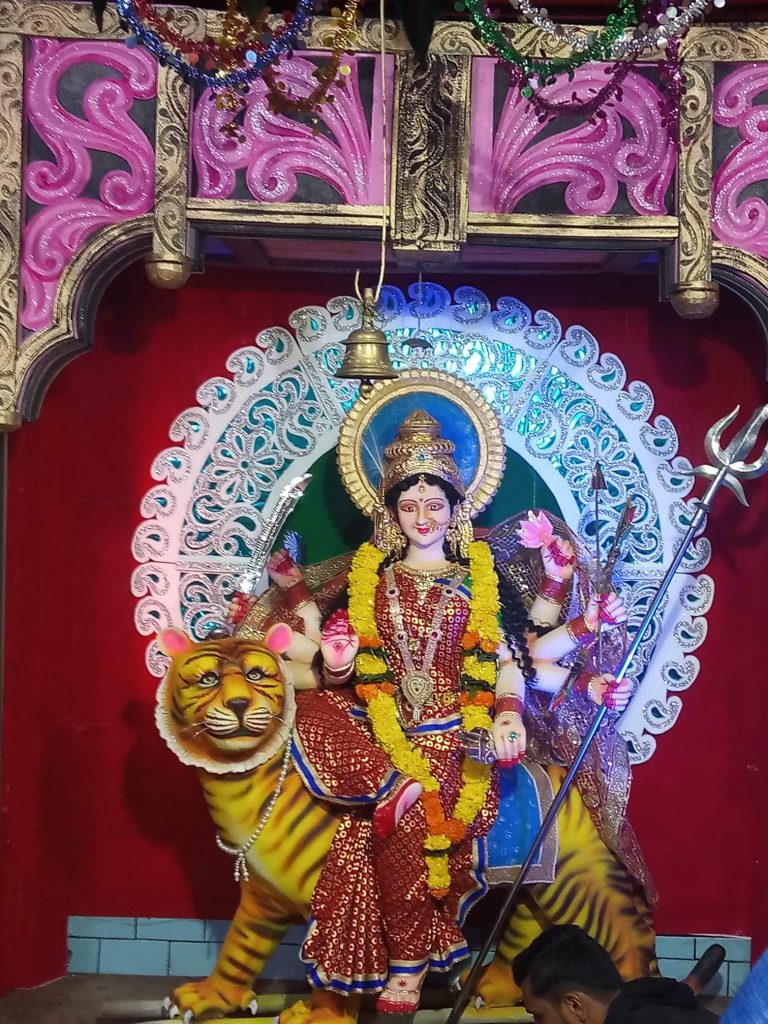Jeypore: Dussehra celebrations in Jeypore began centuries back and is comparable to the one held in Mysore in splendour and royal linkage. Jeypore Dussehra is a mix of royal and tribal customs.
People here are trying to maintain traditions even though the procession of elephants, horses and infantry units of the royal era is no longer there these days.
The Navaratri Puja began late Tuesday night, and the town is geared up to celebrate Dussehra which signifies the victory of good over evil.
Puja has started in the shrines of the town’s presiding deity, Bhagabati, and other deities – Maa Dakhinakali, Maa Jagatjanani, Maa Basantayee – and at the seat of Byaghra Devi of Rajanghar Chowk and the deity worshipped by the Gujarati community. There are eight pandals of Goddess Durga here.
Although the festival is celebrated across the state, Jeypore has the distinction of celebrating it for 200 years. People from all over the state and from Andhra Pradesh and Chhattisgarh come here to participate in the festivities.
History and tradition
It is believed that the ancestors of Jeypore royals had shifted their capital from Nandapur to Purunagada on the foothills of Nakati Dangar near Jeypore in 1751.
This happened during the reign of King Ramchandra Dev I. However, his successor Ramchandra Dev II shifted the capital from Purunagada to Jeypore in 1791.
Ramchandra Dev III, who succeeded him, started celebrating Dussehra on such a grand scale that it was compared to the one at Mysore, according to some historians.
Decorated elephants and horses used to be brought from the royal palace to the Dussehra ground. The royal family, ministers and top British officials used to sit atop elephants during the procession, and it used to be watched by the people of undivided Koraput district.
The infantry units of the king also used to take part in the parade. Tribal dance, music and drama were integral to the Dussehra celebration during that period.
Senior citizens said the Jeypore ruler after his victory over Bastar, brought the latter’s flag to Jeypore, and celebrated the success on Vijaya Dashami.
Apart from this, subjects offering gifts to the ruler and getting felicitated by the latter has been an age old feature of the festival. The British officers also enjoyed this festival.
The festival was celebrated on a grand scale for the last time by Vikramdev Burma in 1952 after the introduction of the Orissa Estates Abolition Act. Since then the festival lost much of its sheen as the celebration had to be scaled down due to shortage of funds. The festival had to be celebrated as per the budget sanctioned by the Endowments Department.
This year the festival is being celebrated with gusto by MLA Tara Prasad Bahinipati, who is also the Chairman of the Jeypore Dusherra Puja Committee.
He has tried his best to restore the traditions of Jeypore Dusherra by inviting the royal family and tribals from nearby districts and villages.
The town has been decorated with colourful lights and tents and the entire town is in a festive mood. Many local and Hindi film artistes will be performing starting from Sasthi to Navami, and on the last day of Dusherra local citizens will gather to set fire to the effigy of Ravana.
Thousands gather to mark the occasion with tribal lathis, folk dances and music during the procession from Rajanghar Chowk to Dussehra Stadium.
“Jeypore Dussehra is a traditional festival and we are trying to maintain traditions. With a mix of tribal and royal rituals this year we are trying to make Dussehra colourful. Special arrangements have been made to invite tribal lathis from different places and preparations are on in full swing to celebrate Vijaya Dasami,” Tara Prasad Bahinipati said.
Tribal researcher Paresh Rath said tribals carrying lathis and seats as symbols of their Goddess used to walk over a 100 km with traditional bands and music to take part in the celebrations after receiving invitation from the Dushera Puja Committee.
On Vijaya Dasami they will be felicitated by the Puja Committee at the Dusherra Stadium where the effigy of Ravana is burnt.
PNN

